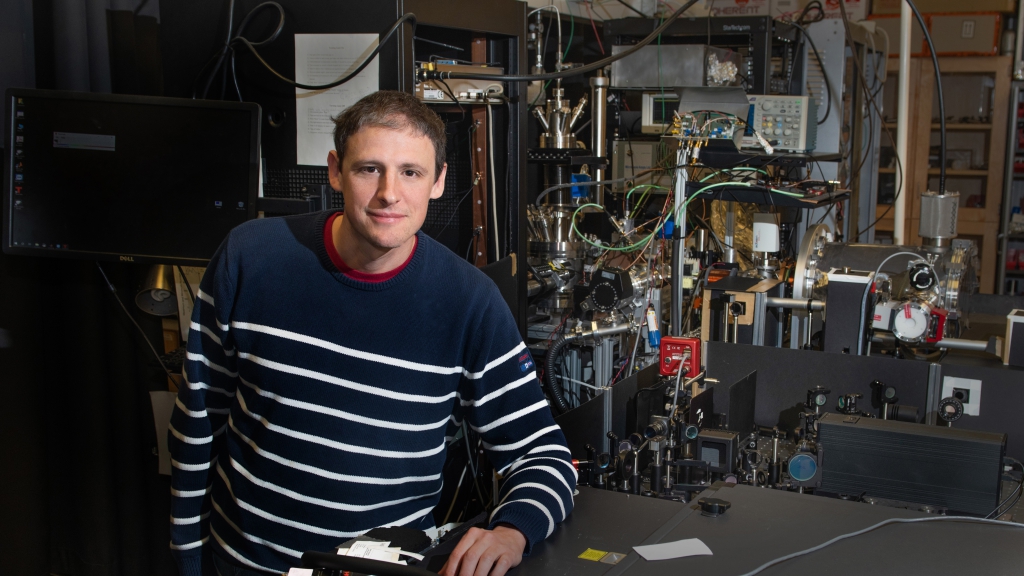Dan Moser, June 11, 2024
Husker physicist part of team that captures groundbreaking ‘molecular movie’
A research team trying to better understand the dynamics of how molecules are structurally changed by light has captured the process for the first time in an animated movie created from experimental data.
The minute-long “molecular movie” is an important step in confirming theoretical predictions with actual experiments, said Martin Centurion, a University of Nebraska–Lincoln physicist and part of the international research team.
Molecules convert light into chemical energy and heat very efficiently, an essential process that drives a variety of chemical reactions such as vision and photosynthesis. Scientists are working to better understand how this happens.
“Because these reactions happen on the atomic scale, they’re very fast,” said Centurion, Carl A. Happold Professor of physics and astronomy. “It’s very difficult to observe. We want to measure these things as they’re happening.
“What will come out of our research is a better understanding and more accurate models of molecular reactions triggered by light.”
Molecules are always vibrating, but light can excite their atoms into different structural configurations that result in photochemical reactions. These reactions are measured in femtoseconds, or trillionths of a second, and researchers must combine experimental and theoretical approaches to fully understand them, Centurion said. Capturing the reaction in animation, as was done here, is a key step forward in combining those approaches.
The molecule at issue in this study is known as o-nitrophenol. The team retrieved the changing molecular structure of a photo-excited molecule directly from experimental diffraction data and expressed it in the molecular movie.
“The results shed new light on the dynamics of photo-excited o-nitrophenol, which is believed to be a source of atmospheric nitrous acid and hydroxyl radicals,” Centurion said.
The movie doesn’t capture the entire process, parts of which are too fast, but it “basically captures the main structural changes after excitation.”
Centurion said these findings lay the groundwork for studying more complex systems known to undergo intramolecular proton transfer like o-nitrophenol does.
In the long term, a better understanding of these molecular processes can lead to the design of new molecules to carry out functions such as the capture and storage of solar energy, and better control of the outcome of chemical reactions.
The movie was created at the SLAC National Accelerator Laboratory, a U.S. Department of Energy facility at Stanford University.
The research is the subject of a cover article in the journal Physical Chemistry Chemical Physics. Pedro Nunes, at the time a postdoctoral student at Nebraska and now at Diamond Light Source in the United Kingdom, was lead author.
Other collaborators include researchers from Stanford; Newcastle University in the U.K.; the Center of Basic Molecular Science at Tsinghua University in Beijing; Universität Duisburg Essen and Technische Universität Dortmund, both in Bochum, Germany.






